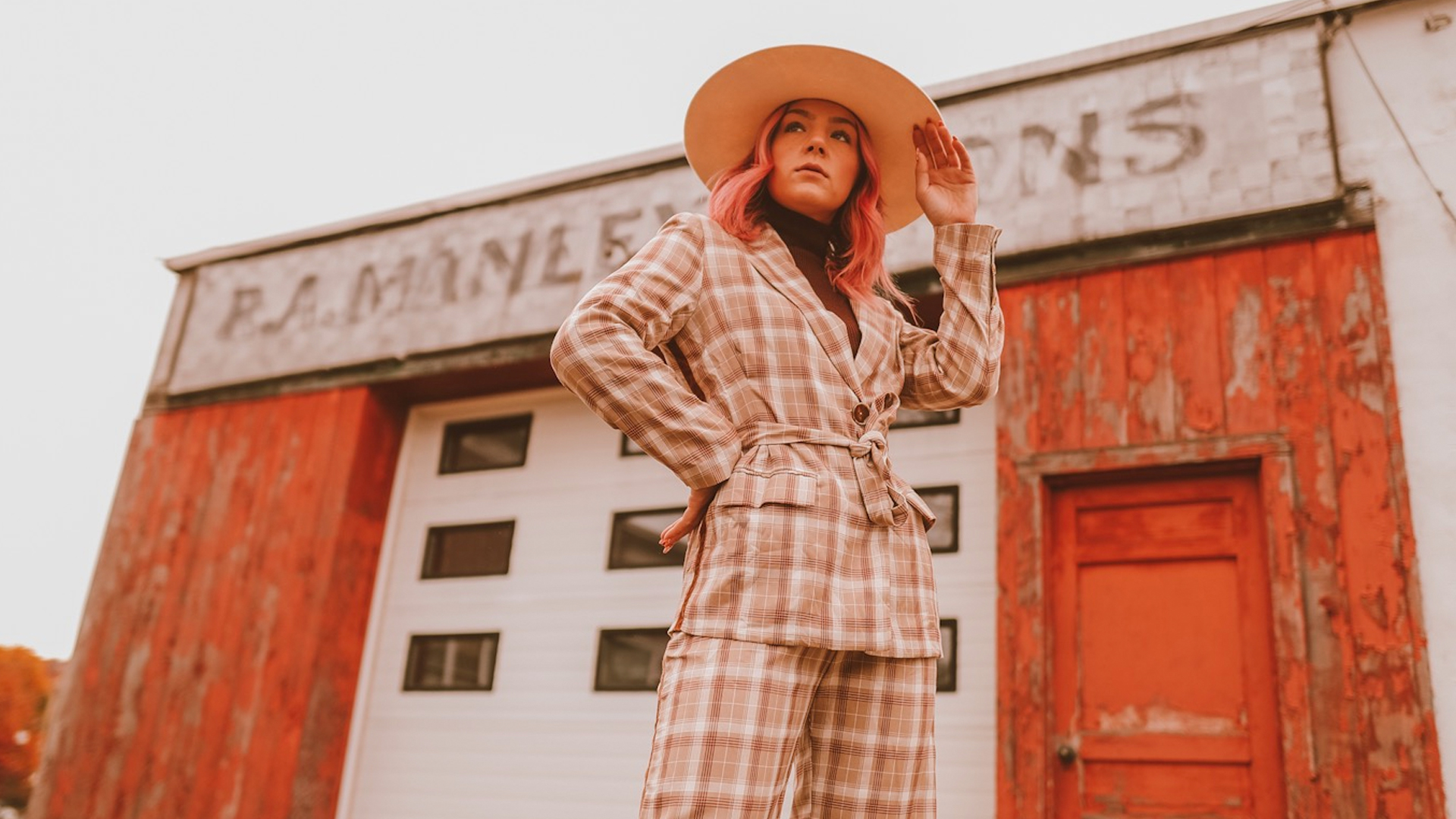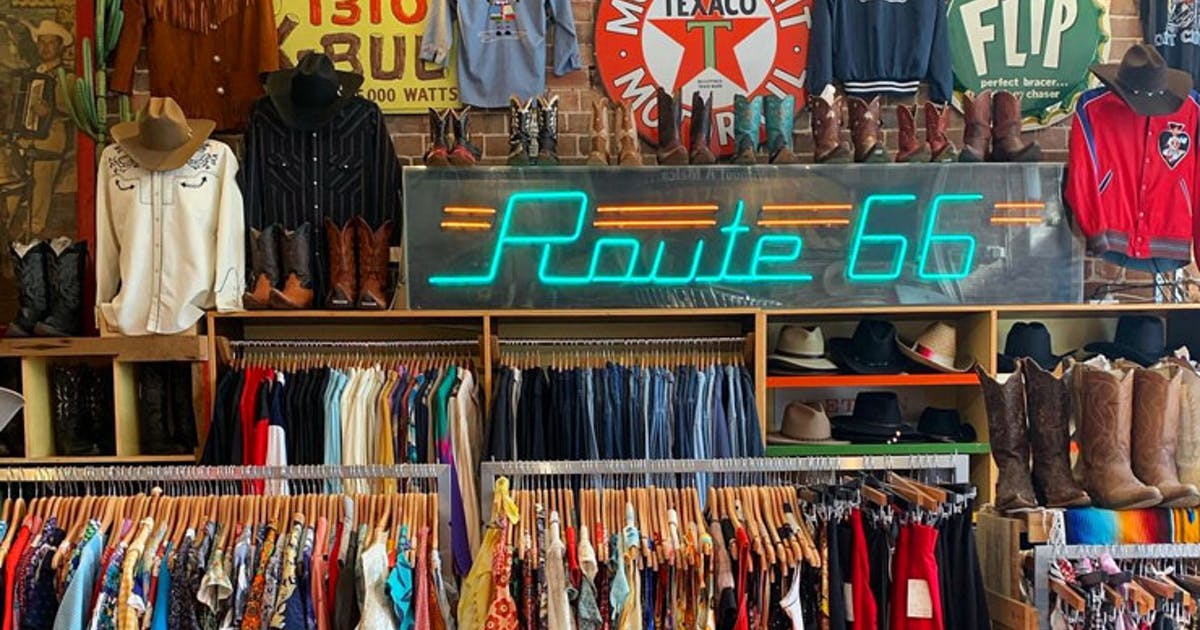Like most things when it comes to fashion, history has a way of repeating itself. Trends come and go, over and over. But now with the rise of Gen-Z habits and the ease of second-hand and sustainable buying, vintage clothing is officially here to stay.

People have always had a taste for the past. From wearing our parents’ clothing and hand-me-downs to deep-diving through consignment bins for costumes, second-hand and vintage clothing has always had a place.
But what’s different now from previous returns to vintage, is that it goes beyond a mere comeback of a past decade’s trend. In 2021, it’s about finding rare and pre-loved pieces made a long time ago and reducing the reliance on fast fashion.
Now, it wouldn’t be out of the ordinary to sport your mum’s 70s flared jeans with your pop’s jacket, a discontinued 90s Vivienne Westwood pearl necklace and a thrifted 00s Prada shoulder bag. That is the magic of Generation Z.
As a collective, we are hyping – and normalising – all kinds of vintage fashion. Through buying, selling, wearing and repairing old clothing, we aim to create rare and cool outfits. And we’re helping the planet while we do it.
Sustainability & Responsibility

Undeniably, the fashion industry has an enormous impact on the planet. The recent surge for sustainable and second-hand clothing has come in an effort to raise environmental consciousness and limit waste, pollution and carbon emissions.
These impending consequences of the global climate crisis, the pandemic and recent civil rights movements have resulted in a new generation of consciousness and action.
As ‘Trendalytics’ Content Stategist Kirstin Breakell told TLZ,
“Periods of uncertainty and survival often breed innovation.”
By employing no-waste solutions like up-cycling clothing, and wearing pre-loved pieces before selling them again yourself, the production of fast fashion and its impact is lowering. If this continues it will have a tremendous effect on fashion’s environmental footprint.
As ThredUp’s 2021 report revealed, the secondhand market is set to hit $77billion in the next five years, and is set to be two times bigger than fast fashion by 2030.
In addition, the emphasis on social justice has impacted shopping habits. For example, following the discovery of unethical practices and the racial injustice seen throughout companies last year, many young people boycotted or unfollowed big brands.
This power to influence the fashion market is being used to demand integrity, accountability and sustainability from big brands and fast fashion.
Desire for Authenticity

Like classic vintage-lovers, Gen-Z desires authentic and genuine vintage finds. We want to be original. I salivate at the idea of owning an original Gaultier mesh long sleeve top, a celebrity’s old custom made Versace minidress, or an exclusive pair of discontinued 90s Prada mules.
While oozing originality and diversity, vintage does something different. It creates a paradox that allows people to stand out from a crowd, as well as fit into current trends.
There is a unique kind of pleasure in owning an item and knowing only you have it. Even most celebrities, influencers and brands are resorting to old pieces and vintage apparel. And it’s true. They just don’t make clothes like they used to. Vintage clothing was made to such a high standard due to better quality of materials.
The trouble with fast fashion, is that the garments are made cheaply and quickly. And now the speed of fashion cycles are faster than ever. Looks that once lasted a decade, are now over within weeks of it being in the runway.
Because vintage was made to last and its production was slower with more attention to detail, and with more material in hems and double linings, it is salvageable and easy to do alterations extending its circle of life!
Nostalgia

Nostalgia is also at the forefront of the return of vintage. Experts say that trends tend to come back around 20 years after their introduction. This is generally thought to be because of the familiarity of what our parents wore and what the world looked like during our childhood.
The current hype and comfort around 90s and 00s apparel is therefore no surprise.
But what’s interesting is that even high-end brands are going through their archives and revisiting past looks to jump on the trends. Take for example the recent surge in Nike Air Jodran 1s. Based of the brand’s 1985 Michael Jordan design, Gen-Zers all over the world are sporting vintage sneakers and their redesigns for that original and timeless look.
Or the craze over an effortless Princess Diana in athletic apparel, mimicked all over Instagram. Most brands out of survival have brought back 90s sportswear due to its incredibly high demand. Many companies and brands are even collecting vintage to sell or creating second-hand campaigns.
Owning authentic pieces and looking for vintage allows for personal identity and allows fashion to celebrate differences like never before. And it creates an experience. Once you learn the ins and outs of the trade, and begin to understand the value of thrifting, finding rare pieces is half the fun.
And the pieces have life to them. Each garment has its own story. Coined by writer John Koenig, “Anemoia” – nostalgia for a time you’ve never known – compels us to romanticise vintage, old values and days gone by through our expression.
The New Norm

Fashion holds art, history and innovation at its core. So the renewed focus on vintage clothing seems only natural.
Apps and tools like Depop, Vestaire, Farfetch, Designer Vintage Instagram Pages, and vintage TikTok accounts have magnified the craze and trend of vintage buying. Exacerbated by the pandemic, they make vintage buying and selling easy, accessible, and rewarding.
What was once a niche hobby is becoming mainstream, and its starting to overtake fast fashion. It’s become a source of income for many. Some high schoolers on Depop are even making the equivalent annual income of a 9-5 office job.
New technology and the nature of thrifting have also changed the way young people interact with fashion, as they call for personal creativity, individuality and experimentation.
This collective comeback of vintage clothing has redefined fashion, pushing designers back toward high-end quality clothing that is ethically made. It’s suspected that the push towards vintage will become even stronger and slow fashion will take over.
CEO of Off-White and fashion designer Virgil Abloh told Icy Vintage,
“There are so many clothes that are cool that are in vintage shops and it’s just about wearing them. I think that fashion is gonna go away from buying a box-fresh something; it’ll be like, hey I’m gonna go into my archive.”
But the official comeback of vintage clothing has had a generation-defining mark on fashion and the industry. Ultimately, the trend is growing and young people continue to tackle the climate crisis and look cool while they do it.
Through resilience, innovation and adaptability, Gen-Z have embraced newness and experimentation like no other generation before, and there’s no doubt that this is just the beginning.
After all, under Darwinism’s famous idea, “It is not the strongest species that survive, nor the most intelligent, but the ones most responsive to change.”
Subscribe to FIB’s Weekly Breaking News Report for your weekly dose of music, fashion and pop culture news!







